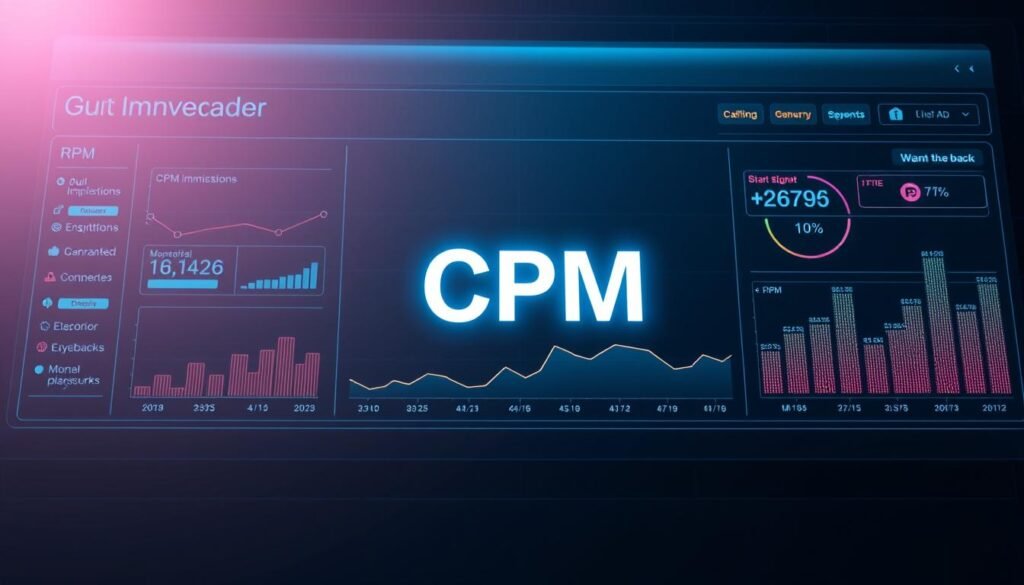Google AdX header bidding lets publishers run unified auctions where multiple demand partners compete in real time for impressions. This approach often lifts CPMs and helps publishers win more competitive bids for their inventory.
In this guide we define what ad revenue means today, show how to calculate returns, and explain why a disciplined monetization plan is essential. We focus on preserving user experience while improving yield per session.
Expect a practical how-to that covers tech prerequisites, step-by-step setup, metrics to track, testing frameworks, and ongoing reporting. The goal is clearer forecasting, higher yield per impression, and a more resilient stack for publishers in the United States.
Key Takeaways
- Header bidding creates unified auctions that increase competition and lift yield.
- Know how to calculate revenue and ROI to make data-driven choices.
- Balance monetization with page speed and user experience to protect engagement.
- Follow a step-by-step setup that includes metrics, testing, and reporting.
- Use diverse formats and demand partners to build stability in money earned per session.
What Ad Revenue Means Today and Why It Matters for Publishers
Earnings from served placements now inform strategic choices about content, product, and audience growth. For publishers, income comes from selling inventory across sites and apps via direct deals, programmatic guaranteed buys, open auctions, and private marketplaces.

At its simplest, advertising income can be estimated by multiplying the number of conversions driven by ads by the conversion value. Publishers also use eCPM and yield per session as complementary metrics to model performance.
Basic calculation and ROI benchmarks
The common heuristic for ROI helps classify outcomes. A 5:1 ratio is typically strong, 10:1 is exceptional, and anything under 2:1 usually fails to cover cost and opportunity loss.
| ROI Tier | Interpretation | Action |
|---|---|---|
| 10:1 | Excellent | Scale and invest in audience growth |
| 5:1 | Strong | Optimize pricing and packaging |
| <2:1 | Not profitable | Revisit cost structure and demand mix |
For example, if total cost is $500 and ad-driven returns are $1,500, the ROI is 3:1. That result is acceptable but signals room to improve margins through better targeting, pricing, and audience segmentation.
Beyond top-line figures, revenue quality matters. Experience, brand safety compliance, and the mix of demand partners affect long-term business health. Monitor CPM, RPM, fill, and session earnings to capture the full value of your inventory and protect audience trust.
How Header Bidding with Google AdX Works
Header bidding lets publishers run a parallel auction where many demand partners bid at once. This unified competition helps surface the highest bid for each impression and often lifts yield per placement.

Concepts: auctions, demand partners, and unified competition
When a page loads, a header bidding wrapper calls adapters that solicit bids from demand partners. Responses return bid values and metadata. The ad server compares those bids and awards the impression to the highest net bidder.
Where AdX fits among networks and SSPs
Google AdX acts as a premium exchange inside the stack and competes alongside other SSPs and networks. Its scale brings advertisers and premium demand that often improves fill and CPMs for quality views.
Key benefits: higher CPMs, more competition, better fill
More bidders mean better price discovery, which drives higher cpms. Header bidding also supports diverse formats—display, rich media, and video—and helps monetize both web and app inventory.
| Benefit | Impact | Notes |
|---|---|---|
| Unified auction | Higher yield | Replaces slow waterfall |
| AdX participation | Better fill | Access to premium advertisers |
| Format support | Diverse demand | Display, video, rich media |
Keep in mind: increased auction pressure improves pricing but requires latency controls to protect user experience.
Prerequisites and Tech Stack Readiness
Setting up header bidding starts with a short readiness checklist. Confirming wrappers, server settings, and privacy signals up front prevents costly rollbacks and keeps pages fast.

Choosing a header bidding wrapper and adapters
Pick a proven wrapper such as Prebid.js for web or Prebid Mobile for apps. Verify each adapter supports your priority demand partners and that Google AdX can participate via Open Bidding or an exchange-aligned setup.
Ad server alignment and line item strategy
Ensure Google Ad Manager has granular line items or dynamic allocation so bids pass with correct price priority. Map placements with key-values (page type, position, viewport) for precise targeting and forecasting.
| Area | Ready Check | Why it matters |
|---|---|---|
| Wrapper & Adapters | Adapter support confirmed | Ensures bid flow and compatibility |
| Ad Server | Line items or dynamic allocation | Preserves correct pricing |
| Privacy & Performance | Consent signals + timeout budgets | Protects fill and user experience |
Standardize creative specs, brand-safety rules, and logging for bid responses, timeouts, and wins. Keep a change log, version control wrapper updates, and QA checklists before production pushes.
Coordinate with legal on consent frameworks (TCF, state privacy) and set bidder timeouts that balance yield and page speed. These steps maintain publisher trust and improve long-term ads outcomes.
Step-by-Step Setup: Implementing Header Bidding for AdX
Start implementation by mapping every placement and defining which sizes and formats each slot will accept.
Configure placements, sizes, and formats
Enumerate ad units and list allowed sizes per placement. Separate high-impact units so they get priority in auctions.
Configure display and video slots with exact size lists and media types to prevent mismatched creatives. This improves bid quality and speeds rendering.

Timeouts, floors, and deal IDs
Set bidder timeouts thoughtfully—800–1200 ms is a common starting point—and track how different times affect wins and page load.
Establish per-placement floors using historical yield and viewability. Use dynamic floors where possible and add private deal IDs for preferred buyers to lock premium demand.
| Setting | Starter Value | Why it matters |
|---|---|---|
| Bidder timeout | 800–1200 ms | Balances speed and win rate |
| Price granularity | $0.10 bands | Reduces rounding loss in auctions |
| Private deals | Deal IDs enabled | Secures premium demand and higher revenue |
Testing bids, latency, and viewability before launch
Integrate adapters and verify publisher and placement IDs return valid bids for impressions across web and app devices.
QA creatives for policy, load behavior, and layout stability—pay extra attention to video ads and player settings that affect views and user experience.
Validate measurement tags, capture win/loss and timeout reasons, and run staged tests that simulate traffic to confirm accurate counting and acceptable latency.
Metrics That Drive Monetization: CPM, RPM, Impressions, and Monetized Playbacks
Clear, comparable metrics let publishers spot gaps between what advertisers pay and what creators collect. Tracking the right set of numbers makes it easier to diagnose auction issues and delivery friction.

CPM and playback-based CPM
CPM is the cost an advertiser pays per 1,000 ad impressions. It reflects competition and budget cycles, not your net take.
Playback-based CPM applies to video: one playback can include multiple ads, so playback-based CPM often runs higher than standard cpms when more ads play per view.
RPM versus CPM
RPM measures how much money a creator earns per 1,000 views after revenue share and all monetized sources. RPM is lower than CPM because it is net of shares and includes unmonetized views.
Counting views, impressions, and monetized playbacks
Views count how many times content is watched. Impressions count each individual ad shown. Estimated monetized playbacks count times a playback included at least one ad.
| Metric | What it counts | Why it matters |
|---|---|---|
| CPM | Cost per 1,000 impressions | Shows advertiser demand and cost |
| Playback CPM | Cost per 1,000 playbacks with ads | Reflects multi-ad playbacks in video |
| RPM | Money earned per 1,000 views | Shows creator take after share |
| Monetized playbacks | Times a view included ads | Helps measure fill and delivery |
Using these metrics to evaluate header bidding
Watch changes in CPM vs RPM, impressions versus plays, and the ratio of monetized playbacks to total views. These signals reveal whether floors, timeouts, or viewability are limiting monetization.
Optimizing for Higher CPMs and Total Revenue
Smart floor and format choices can shift which buyers compete and lift returns across key placements.
Bid floors, price granularity, and demand diversification
Use intelligent bid floors tailored by placement and market to avoid underpricing while keeping fill healthy.
Align price granularity with your expected cpm bands so auctions pass accurate price signals and preserve bid precision.
Diversify demand partners to increase competition and reduce dependency on a single advertiser or buyer type.

High-value formats that add measurable value
Add video and rewarded video in app or web flows where engagement supports higher cpms.
Use interstitials sparingly on key transitions to capture higher rates without harming experience.
Seasonality, geography, and audience segmentation
Plan deal packages before Q4 and local shopping peaks. Advertisers often bid higher prior to holidays.
Segment by geography and cohorts to find where views deliver outsized rates. Then expand inventory or frequency selectively.
| Action | Why it matters | Quick guideline |
|---|---|---|
| Floors by market | Captures stronger bidder segments | Iterate weekly |
| Price granularity | Preserves close-bid value | $0.10 bands |
| Format mix | Unlocks higher payouts | Add video/rewarded where UX fits |
Protecting User Experience While Increasing Ads
Preserving site speed and layout stability is essential when adding more monetized placements to pages. A measured approach keeps sessions longer and trust intact while you optimize yield.

Balancing viewability, latency, and layout shifts
Set strict performance budgets for header bidding timeouts and creative load. Treat timeouts as safety gates so auctions never block primary content rendering.
Improve viewability ethically: prioritize in-view placements and lazy-load below-the-fold units. Avoid intrusive formats that cause layout shifts or frustrate the user.
Monitor CLS, LCP, and interaction-to-next-paint. Flag regressions and block new integrations until core experience metrics pass thresholds.
Optimizing landing pages and CTAs to capture value
Design landing pages with clear CTAs, concise messaging, and fast assets. A clean conversion path increases the rate at which engaged visitors convert.
Use A/B testing to iterate CTA copy, layout, and creative standards. Enforce creative limits (file weight, animation length, audio off by default) so visuals don’t harm the experience.
| Control | Why it matters | Starter guideline |
|---|---|---|
| Timeouts & budgets | Protects page speed | 800–1200 ms max |
| Frequency caps | Preserves session quality | Limit per page view |
| Mobile/app checks | Ensures touch & video UX | Validate responsive controls |
A/B Tests and Incremental Experiments That Move the Needle
Small, controlled tests reveal which auction levers truly move yield and user engagement. Design each experiment to change only one variable so you can link cause and effect clearly.

Creative types, ad density, and frequency caps
Run swaps between static, video, and rich creatives to measure viewability and session impact. Test ad density in single placements to find the point where extra impressions stop helping.
Apply frequency caps across pages and app flows. Track when more impressions reduce session length or return visits.
Floor tests, adapter order, and timeout tuning
Segment floor tests by geo, device, and content category to spot elasticity differences. Rotate adapter order in the wrapper and record changes in win rates and latency.
Tune timeouts to capture slower bidders without hurting page performance. Validate on mobile networks and app environments.
| Test | Window | Primary metrics |
|---|---|---|
| Creative mix | 2 weeks | CPM, viewability, bounce |
| Floor by geo | 2 weeks | Fill, CPM, RPM |
| Timeout adjust | 2 weeks | Latency, wins, session length |
Use a 95% confidence threshold, document rollback criteria, and keep a prioritized test backlog so improvements are steady and reversible.
Troubleshooting Performance and Revenue Drops
A sudden drop in auction yield often traces back to supply, timeouts, or recent code changes. Start with concrete logs and narrow the scope before changing floors or formats.
Diagnosing fill rate, bid response, and timeouts
Check fill and bidder logs first. Look for increased timeout rates, no-bid responses, or adapters blocked by configuration updates. These signals explain most short-term drops.
Compare impressions and views by device and week-over-week to find measurement gaps. Missing consent or malformed privacy signals also reduce personalized demand and lower clearing prices from an advertiser perspective.
Detecting shifts in ad supply, formats, and audience mix
Analyze audience geography and content category shifts. A surge of traffic from lower-paying regions or a loss of high-CPM formats can cut CPMs and fill quickly.
Review recent wrapper or template pushes for regressions that break calls or creative rendering. If format availability dropped, restore safe size lists or enable alternate creatives temporarily.
| Check | Primary symptom | Action |
|---|---|---|
| Fill & bid logs | High timeouts / no-bids | Identify adapters/times, roll back or patch |
| Impressions & views | Delivery gaps by device | Compare week-over-week; validate measurement |
| Supply mix | Missing high-CPM formats | Re-enable sizes or expand safe formats |
Engage priority partners and your ad server rep with timeout rates, bid landscapes, and creative error codes. While you diagnose, use temporary mitigations like adjusted floors, expanded size lists, or rebalanced frequency caps to protect short-term performance.
Ad Revenue Reporting and Dashboards for Ongoing Decisions
A clear dashboard turns raw auction data into daily decisions that improve yield and user experience. Build reporting that highlights the right metrics and lets teams filter by device, geography, format, and advertiser quickly.
Essential KPIs to track
Track CPM, RPM, eCPM, fill rate, viewability, CTR, and total revenue consistently. Define each metric so everyone interprets cost per calculations the same way when diagnosing shifts.
Segment and compare
Break data by app versus web, device type, geo, and content cohort. This reveals where latency or creative issues suppress impressions, cpms, or RPM.
| View | Primary metric | Why it matters | Action |
|---|---|---|---|
| Device (mobile/desktop) | Impressions & CPM | Shows performance gaps by UX and speed | Adjust timeouts or creative sizes |
| Format (video/static) | Playback CPM & monetized playbacks | Clarifies delivery vs total views | Optimize player settings and ad pods |
| Advertiser & networks | eCPM & fill rate | Measures partner lift and pacing | Reweight or replace underperforming deals |
| Content cohort | RPM & total revenue | Identifies stable, high-value segments | Prioritize sales packages and bundles |
Practical tips: Include frequency distributions of CPMs and the number times deals deliver to detect pacing issues. Report monetized playbacks against total views so teams see delivery gaps and creative opportunities.
Conclusion
strong, Publishers should treat header bidding with AdX as a repeatable playbook: prepare the stack, add complementary demand, monitor the right metrics, and optimize in measured steps.
Unified competition brings better pricing because more qualified ads compete fairly. That raises market value and supports sustainable monetization tied to user trust.
Keep testing, disciplined reporting, and cross-team collaboration as daily habits. These translate market signals into durable money and steady improvements in total revenue.
Finally, set quarterly optimization roadmaps, refresh deal pipelines before seasonal peaks, and evolve formats responsibly to protect content and keep outcomes improving.
